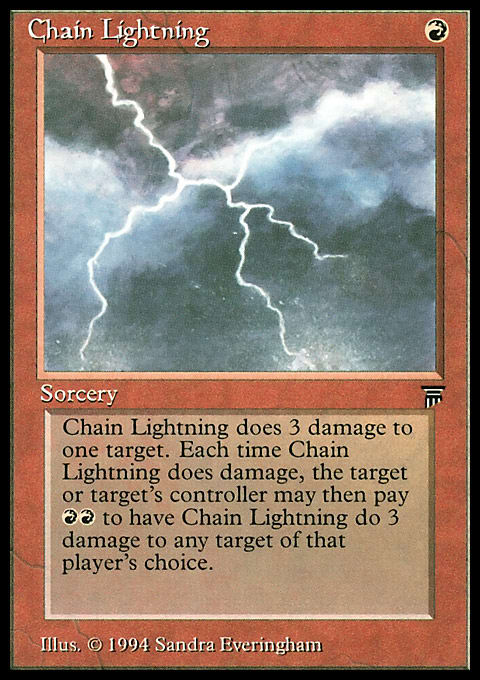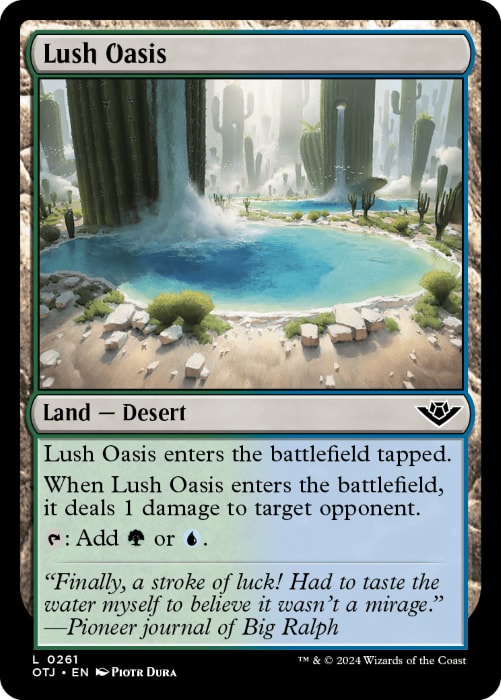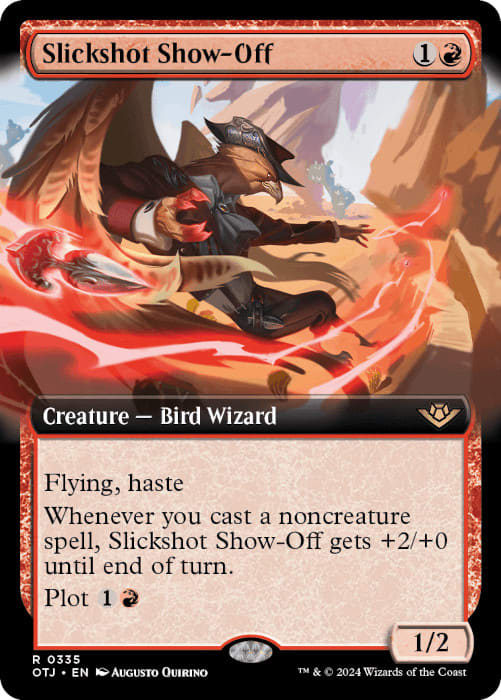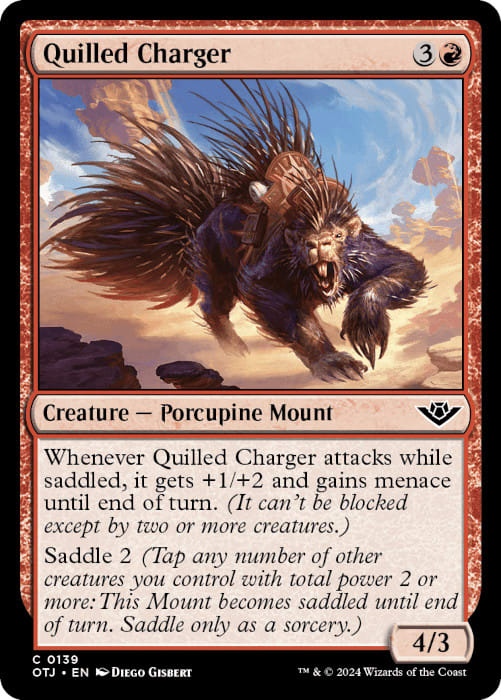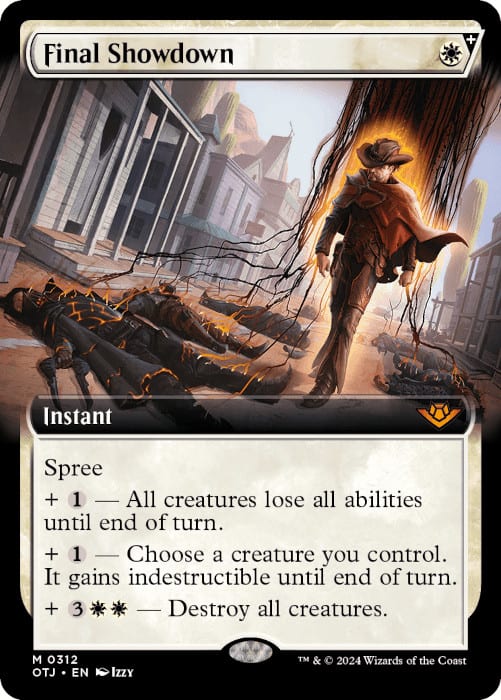Yee haw!
It's off to the wild wild west, as the floodgates have apparently opened into this new plane of Thunder Junction and everyone wants a piece. Seriously, everyone. Jace, Oko, Rakdos, Vraska, Gitrog Monster, Marchesa, and even freaking Tinybones are all here in cowboy hats and spurs and ready to saddle up.
While the motif may be a little silly, there's a lot of really interesting mechanics in the set, and if the cards that have already been previewed so far are any indication, then this is going to be a very powerful set across many different formats.
There's also an excellent amount of backwards-compatibility among the mechanics of Outlaws At Thunder Junction, meaning it is going to play well with itself, but also very well many of the cards already available which creates a ton of very fun puzzles.
So, it's high time we quit yappin and took a look at these mechanics!
Crime
Crime is an interesting mechanic in that it isn't actually anything "new" per say.
Targeting opponents, anything they control, and/or cards in their graveyards is a crime.
"Committing a crime" simply means to target your opponent, anything that they control, or a card in their graveyard. So basically, we've been committing crimes for over 30 years!
Did you Chain Lightning your opponent's White Knight? That's a crime! Bribery your opponent's Verdant Force? Crime! Cling to Dust your opponent's Parhelion II to draw card? Crime!
Okay, so we've established that basically every Magic player alive is a lawless heathen, but what does it actually mean as far as gameplay goes? Let's take a look at Gisa, the Hellraiser:
Gisa loves the undead, buffing your zombies and skeletons, and has a nice ward ability too, but her big draw is her crime ability:
Whenever you commit a crime, create two tapped 2/2 blue and black Zombie Rogue creature tokens. This ability triggers only once each turn.
Thoughtseize your opponent? Get two zombie tokens. Fatal Push a creature? Get two zombie tokens. Exile a card from your opponent's graveyard with Graveyard Trespasser // Graveyard Glutton? Get two zombie tokens.
You get the idea. And that's the fun part about evaluating the new cards with this crime ability - they work with pretty much every Magic card already in existence, while forcing you to think about them in new ways. A card like Scavenging Ooze goes from being a nice graveyard hoser to an almost limitless source of crime, and so on!
Take a card like Tinybones Joins Up. At face value, it just looks like a simple little value card; your opponent discards a card and you get in a chip shot here or there. But in the context of committing crimes, this card is actually an awesome engine. Every time a legendary creature enters your battlefield, you get to commit another crime, which naturally plays very well with the aforementioned Gisa. Even the lands are getting in on the action, as the common dual land cycle of the set just looks like an inverse of gainlands like Tranquil Cove, but they're actually also a way to commit a crime too!
We're going to be unpacking the ramifications of crime for a long time.
Plot
Next up is a pre-payment mechanic that feels a bit like suspend meets foretell, plot!
Plot X (You may pay X and exile this card from your hand. Cast it as a sorcery on a later turn without paying its mana cost. Plot only as a sorcery.)
Plot allows you to pay a cost upfront for the ability to play a spell on any future turn for free. In this way it's a lot like suspend, as you don't need to pay any additional cost when you cast it, but you get to decide when you want to cast it rather than needing to wait.
We can see how and why plot can be effective when looking at Slickshot Show-Off. One of the issues that cheap prowess creatures can have is never being able to trigger them on the early turns before your opponent can kill them. This is why more expensive prowess creatures like Monastery Mentor and Adeliz, the Cinder Wind struggle even in Standard. However, with Slickshot Show-Off, you can pay for it on turn two, and then cast it and go nuts casting spells on turn three. Or even better, you can just wait until your opponent's shields are down to cast it.
While it does have the issue of not immediately effecting the board, plot feels like a mechanic with a ton of play to it that will reward players who think ahead.
However, plot also functions in ways other than paying a cost. Take a look at Make Your Own Luck, which uses it as a way to play stuff for free. You must wait at least a turn to cast your plotted card, but if you spike something huge in your top three cards then five mana to draw two and cast Emrakul, the Aeons Torn or something is pretty nice!
Outlaws
We haven't seen a full-on "creature type matters" set in a while, but that doesn't mean we haven't gotten a few mechanics that care about creature types. In Thunder Junction, we've got outlaws:
Assassins, Mercenaries, Pirates, Rogues, and Warlocks are outlaws.
There's not much to this one really, just a grouping of five different flavorful creature types for a variety of effects.
Seriously, the variety on the outlaw cards previewed so far is astounding. We've got another, almost obvious Doom Blade variant (two mana Black card that kills a creature that's not one of the main themes of the set is a staple at this point) that currently kills over 90% of the best creatures in most formats. We've got the return of affinity(!), albeit probably only on one card, on Hellspur Brute which has affinity for outlaws. And then we've got another funky Blue enchantment that copies creatures in double down.
This is another fun mechanic that is very backwards compatible, as now we need to look back at all the other outlaws we've already got.
Saddle
Vehicles have a similar problem to equipment; it's just hard to play that many of them because you risk being stuck with a card you can't use because your opponent killed all of your creatures. Well, what if your vehicles were already creatures?
Saddle X (Tap any number of other creatures you control with total power X or more: This Mount becomes saddled until end of turn. Saddle only as a sorcery.)
So rather than requiring another creature to do anything, saddle can rather be looked at as a bonus you can use to augment your creatures.
This might be just a simple augmentation like on Quilled Charger, where you can give it a small boost and a keyword, or it might be something a bit more elaborate like on everyone's favorite monster, The Gitrog, Ravenous Ride. The Gitrog plays out more like a sacrifice effect than an augmentation, but being able to sacrifice creatures to draw cards on a body that is already quite huge and powerful is awesome.
Realistically, that's the draw of all of these saddle cards - you're already getting a solid creature, with the saddle effect being a bonus rather than a requirement, and that is excellent.
Spree
The last major mechanic is another interesting twist on kicker, spree:
Spree (Choose one or more additional costs.)
While it looks a little odd, with both a strange plus symbol on the mana cost as well as the fact that the card will never cost what is written in the top right, spree is simple enough. You've got a modal spell where you get to pick and choose what you want to do by spending more mana.
Like most modal spells, it's going to be important them to have one mode that is excellent. Cards like Boros Charm are a great example of this, with the four damage mode being used most often and the others being more of a bonus. With the spree cards we're seeing so far, we're definitely seeing this. Insatiable Avarice compares pretty favorable to Painful Truths, a card that saw a decent amount of play during it's time, with the added modality of being a bad Vampiric Tutor. And then you've got Final Showdown, which will mostly be starting as a six mana, instant speed sweeper effect. Six mana is actually quite the deal for an instant speed sweeper, but Final Showdown can also protect one of your creatures or remove creature abilities, both excellent modes on a sweeper.
Step one when evaluating spree cards is going to be finding the mode you want most commonly, but from what we've seen so far these are priced to move.
Deserts, Treasures, And More
Of course, these are only the major mechanics of the set.
There are still some lighter themes, perhaps most notable the return of deserts, which bring a fun little "lands matter" sub-theme into the set much like caves in Lost Caverns of Ixalan, and look like they will be a lot of fun in Limited.
Outlaws Of Thunder Junction doesn't seem to be messing around when it comes to power level, so it will be super exciting to see how the set plays out in various constructed formats, at the draft tables, and of course at the Pro Tour at the end of April!














